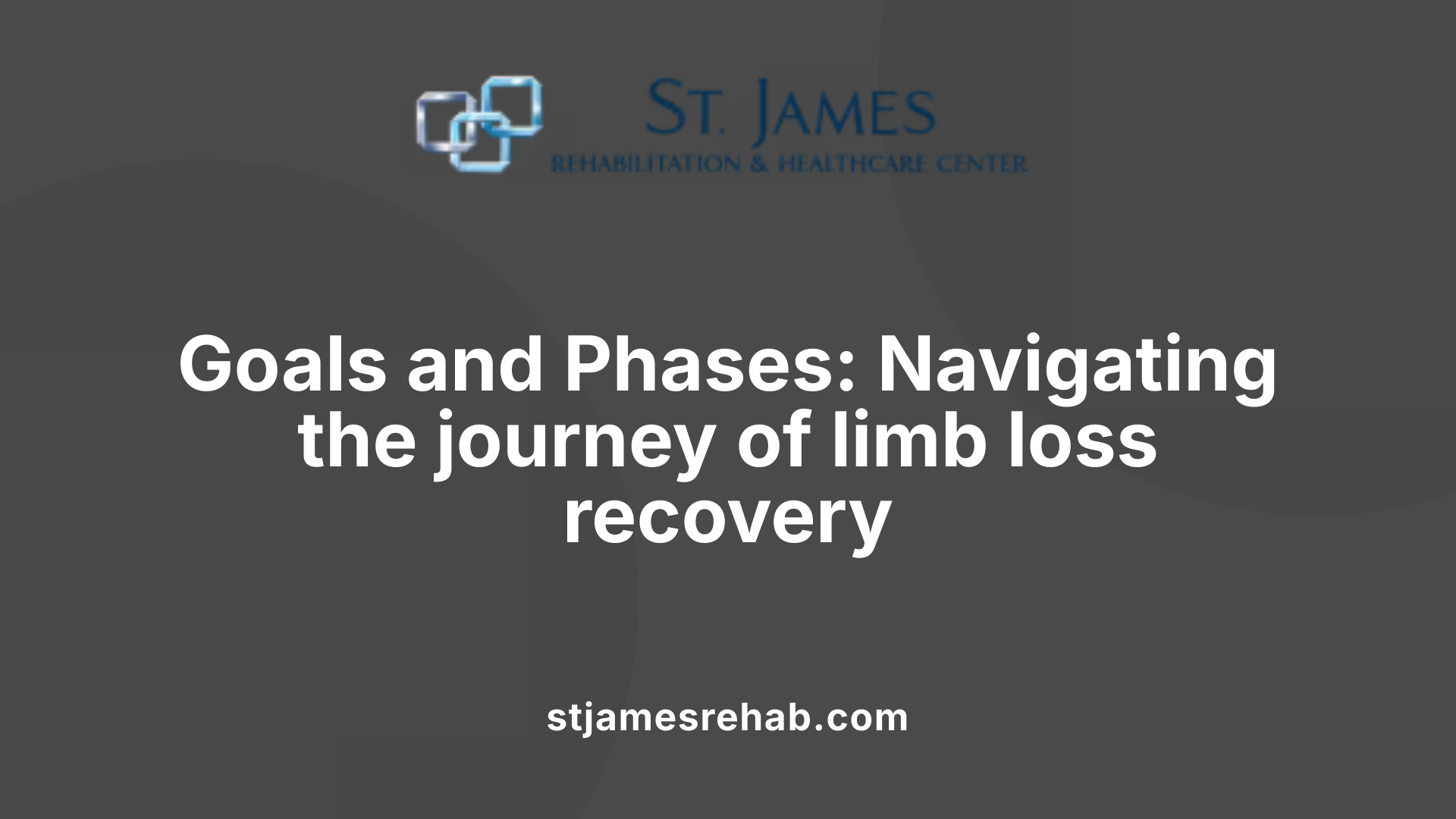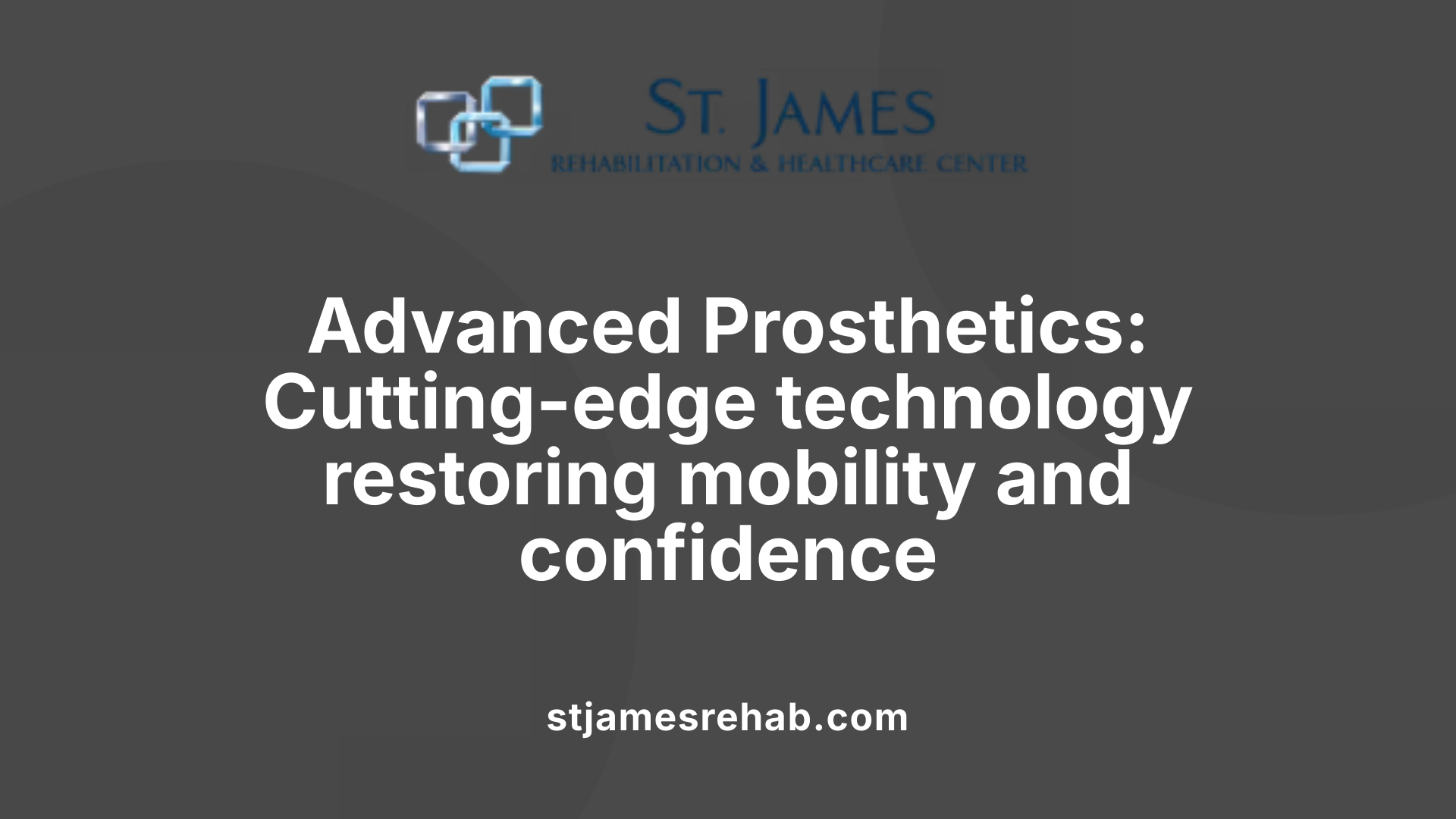Amputee Care: Providing Support and Comfort After Limb Loss
Navigating the Journey of Limb Loss: Comprehensive Care and Support Strategies

Understanding Amputee Support and Rehabilitation
Limb loss can be a life-changing event, impacting physical capabilities, emotional well-being, and social interactions. Providing effective support and comprehensive care involves a multidisciplinary approach that addresses not only physical recovery but also mental health, social integration, and quality of life. This article explores the critical aspects of amputee care, from surgical expectations and rehabilitation processes to emotional support, prosthetic advancements, and community resources.
The Rehabilitation Process: Goals, Phases, and Personalization

What are the main goals of rehabilitation after limb loss?
Rehabilitation after limb loss aims to help individuals regain as much independence and mobility as possible. The primary goal is to restore physical function through prosthetic use, including walking and performing daily activities. Equally important is social reintegration—reconnecting with community, work, and recreational activities. Rehabilitation services focus on assessing the residual limb, shaping it for prosthetic fit, and training in strength, balance, and gait to improve mobility.
Addressing emotional and social concerns is essential for overall well-being. Patients are supported in coping with body image changes, emotional adjustments, and psychological challenges like anxiety or depression. The comprehensive process promotes not just physical recovery, but also emotional resilience, helping individuals lead active, fulfilling lives.
What does a personalized rehabilitation plan typically involve?
A tailored rehabilitation plan considers each person's unique health, age, level of amputation, and personal aspirations. It begins with thorough assessments conducted by a team of specialists, including physical medicine and rehabilitation doctors, physical and occupational therapists, prosthetists, and mental health professionals.
Based on these evaluations, the team develops a customized approach that includes physical therapy to strengthen muscles and improve balance, as well as gait training for walking with a prosthetic. Emotional support and counseling are integrated to address psychological adjustments.
The plan also involves prosthetic fitting and training, ensuring proper device alignment and comfort. Social and vocational reintegration strategies are incorporated to help individuals return to work or community roles. Regular follow-ups and adjustments are vital, allowing the rehabilitation process to adapt to the person's progress and changing needs.
More information:
For further details on how multidisciplinary care contributes to effective amputee rehabilitation, see the search query: "Amputee rehabilitation multidisciplinary care."
| Aspect of Care | Description | Resources |
|---|---|---|
| Goals | Physical function, social reintegration, psychological well-being | Physical therapists, psychologists |
| Team Members | Medical doctors, therapists, prosthetists, mental health specialists | Healthcare centers |
| Phases | Preoperative planning, post-operative recovery, prosthetic fitting, ongoing adaptation | Rehabilitation guidelines |
| Personalization | Tailored assessments, goals, therapies, device fitting | Individual care plans |
This structured, individualized approach enhances the chances of successful recovery, fostering independence and improving quality of life for amputees.
Post-Operative and Long-Term Care: Managing Expectations and Complications

What are the typical healing times and the healing process after limb amputation?
Immediately following surgery, the focus is on healing the residual limb, with initial wound healing generally occurring within 3 to 4 weeks. During this period, the surgical site is monitored for signs of infection or complications. Internally, the scar tissue continues to develop and mature, with complete healing of the residual limb often taking between 12 to 18 months. Individual health, age, the type of amputation, and the surgical approach all influence the pace of recovery. Proper residual limb care, including skin management and limb shaping, is essential to prepare the patient for prosthetic fitting.
What are the common post-operative care considerations for amputees?
Post-operative care involves several critical components. Managing pain effectively and preventing infections are top priorities. Swelling is controlled through dressings, compression wraps, and limb elevation. To avoid joint contractures, early physiotherapy focusing on maintaining joint mobility and muscle strength is necessary. Limb shaping, a process called residual limb management, ensures the remaining limb is suitable for prosthetic fitting. Early intervention with physiotherapists helps promote wound healing, improve circulation, and prepare patients for future mobility tasks.
What about long-term care and ongoing management?
Long-term management extends beyond initial healing and involves ongoing rehabilitation. This includes physical therapy to enhance strength, mobility, and stamina. Emotional well-being is supported through psychological care to address body image issues, phantom limb sensations, and potential emotional distress. Regular skin checks and prosthetic maintenance are important to detect and prevent issues such as skin irritation, breakdown, or socket fit problems. Environmental modifications at home or work can enhance independence. Peer support groups and community reintegration programs help reduce feelings of isolation and promote active participation in social activities. Consistent follow-up with healthcare providers ensures optimal outcomes and addresses emerging challenges proactively.
Prosthetics and Assistive Technologies: Restoring Movement and Independence

What types of prosthetic devices are available, and how are they tailored to the individual?
Modern prosthetic devices are carefully designed to meet each person's unique physical and lifestyle needs. They are made using lighter yet stronger materials, incorporating advanced technology to enhance durability and performance.
Components of a prosthetic include the pylon (the main structural element), socket (which fits onto the residual limb), liners (soft materials for comfort), and suspension systems (which hold the prosthesis in place). Custom fitting is essential, involving assessments of physical readiness and personal goals to ensure optimal comfort and function.
What is involved in prosthetic training and ongoing support?
Training with a prosthesis involves learning how to correctly don and doff the device, maintain it properly, and walk or perform activities safely. Skilled prosthetists provide ongoing support by making adjustments as needed and helping users adapt to their device.
This process often includes gait training—teaching proper walking techniques—and addressing any issues with fit or comfort over time. Consistent support increases the likelihood of successful mobility and boosts confidence in everyday activities.
How do technological advances improve prosthetic function and user experience?
Recent innovations have significantly enhanced the capabilities of prosthetic devices. Newer models now utilize lighter materials that do not compromise strength, making prostheses more comfortable and easier to wear for extended periods.
Advanced features include computerized control systems that allow for more natural movement, as well as adaptive technologies that can respond to different activities seamlessly. These improvements enable users to perform a wider range of movements, participate in sports, and engage more fully in daily life.
| Aspect of Prosthetics | Description | Impact |
|---|---|---|
| Materials | Lighter, stronger composites | Increased comfort and durability |
| Control Technology | Computerized, responsive systems | Better movement control |
| Custom Fit | Tailored sockets and adjustments | Enhanced comfort and functionality |
| Adaptive Features | Sensors and responsive mechanisms | Improved activity versatility |
By integrating these technological advancements, prostheses are more responsive and lifelike, fostering greater independence and quality of life for users.
Emotional and Social Aspects: Building Resilience and Support Networks
Amputation not only brings physical changes but also emotional and social challenges for individuals. Common emotional hurdles include grief over the loss of a limb, feelings of depression or anxiety, and struggles with body image. Many amputees experience initial shock, anger, or social withdrawal, especially if the amputation was traumatic. Addressing these feelings early on with mental health assessments and counseling can foster resilience. Support networks play a crucial role in emotional adjustment.
Community and peer support groups are instrumental in helping amputees cope. These groups provide a safe space to share experiences, exchange practical advice, and find solace in knowing they are not alone. Peer mentorship programs connect newly amputed individuals with trained volunteers who have similar experiences, offering encouragement and guidance. Such connections help reduce feelings of isolation, build confidence, and foster a sense of belonging.
Body image and self-esteem significantly influence recovery and social participation. Challenges with self-perception can diminish confidence and hinder psychological well-being. Therapeutic interventions, positive reinforcement, and engaging in adaptive activities—like sports or hobbies—aid in restoring self-esteem. Acceptance of one’s new body and celebrating progress are vital steps in rebuilding confidence. Overall, combining mental health care with community engagement promotes holistic recovery, empowering amputees to regain independence and enjoy life post-amputation.
For more information about emotional support options for amputees, searching keywords like "emotional support for amputees" can lead to valuable resources and programs tailored to emotional and mental well-being.
Community Resources and Practical Support: Enhancing Living with Limb Loss
Support for amputees and their families extends beyond medical care, encompassing a variety of community resources aimed at fostering emotional well-being, social integration, and physical activity.
The National Limb Loss Resource Center® stands out as a comprehensive guide, offering detailed fact sheets, expert advice, and peer support opportunities. It helps individuals navigate prosthetic options, rehabilitation, and emotional health.
Community groups, such as the Amputee Coalition, facilitate connection among individuals facing similar challenges through support groups, peer mentorship, and educational programs. These groups provide emotional support, shared experiences, and valuable advice.
Financial assistance is also vital. Organizations like The War Amps offer funding support for artificial limbs, helping alleviate the financial burdens associated with prosthetic devices and ongoing care.
Engagement in adaptive sports plays a significant role in long-term recovery and quality of life. Groups like Disabled Sports USA and the Challenged Athletes Foundation promote participation in activities such as wheelchair basketball, adaptive cycling, swimming, and more. These programs help build strength, improve mobility, and boost confidence.
Families and caregivers are essential to the recovery journey. Practical support includes helping with daily tasks, attending medical appointments, and encouraging independence. Educating caregivers about proper limb care, prosthetic management, and emotional support strategies enhances their ability to assist effectively.
Joining caregiver support groups and leveraging community resources reduces stress and creates a nurturing environment conducive to adaptation.
Participation in community activities and adaptive sports fosters social bonds, improves physical health, and encourages a positive outlook. These engagements help amputees reconnect with their passions, build new skills, and combat feelings of isolation.
In summary, a combination of educational resources, community involvement, financial assistance, and active participation in adaptive sports significantly enhances the quality of life for individuals living with limb loss.
| Resource Type | Description | Examples |
|---|---|---|
| Support Organizations | Offer emotional support, peer mentoring, and educational programs | Amputee Coalition, Hanger Clinic AmPOWER |
| Financial Aid | Assist with prosthetic and medical expenses | The War Amps |
| Community Groups | Foster social connection and shared experiences | Local support groups, online forums |
| Adaptive Sports | Promote physical activity and confidence | Disabled Sports USA, Challenged Athletes Foundation |
| Caregiver Support | Provide training and emotional support for families | Caregiver training programs, support groups |
Staying connected to these resources ensures a comprehensive approach to living well with limb loss, fostering resilience, independence, and a sense of community.
A Holistic Approach to Amputee Care
Caring for individuals after limb loss requires a holistic approach that integrates advanced medical treatment, personalized rehabilitation, emotional resilience, and strong community support. Ongoing education, technological innovation, and community engagement are vital to help amputees regain independence, improve their quality of life, and find a new sense of normalcy. By fostering understanding, compassion, and support, we can ensure that every amputee receives the care they need to thrive.
References
- Amputation: Recovery and Rehabilitation | Johns Hopkins Medicine
- Living With Amputation | The War Amps
- After Limb Loss (Amputation) - Halifax Infirmary - Nova Scotia Health
- Amputee Coalition: Home
- Coping With Limb Loss: Tips and Strategies - PAM Health
- 6 Things To Prioritize After Losing A Limb - PBO Group
- Amputee - Musculoskeletal (MSK) Program - Nova Scotia Health
- How to Help an Amputee Adapt to Life After Losing a Limb - Ossur
- Prosthetics and Amputee Care - Toronto - Sunnybrook Hospital
- How to Cope with Grief and Loss After Amputation? | PrimeCare






